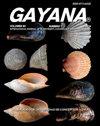智利南部农业生态系统树篱中分散后的种子捕食
IF 0.2
4区 生物学
Q4 ZOOLOGY
引用次数: 0
摘要
农业生态系统拥有各种各样的生物,这些生物可以通过消耗种子来控制杂草。然而,智利南部农业生态系统的种子消耗率实际上是未知的。我们通过实验评估了鸟类、啮齿动物和无脊椎动物在以树木、灌木和草为主的树篱中对燕麦种子的消耗。消耗的种子生物量不受灌木篱笆中主要植被的影响,但因消耗种子的动物群而异。主要的种子消费者是啮齿动物,其次是无脊椎动物和鸟类,后者似乎只在灌木为主的栖息地中很重要。此外,我们在62%的实验站观察到了外来蛞蝓Deroceras reticulatum吞噬种子的现象。需要进一步研究食草动物和杂草种子之间相互作用的时空动力学,以确认啮齿动物对智利南部农业生态系统中杂草的潜在控制和调节功能。本文章由计算机程序翻译,如有差异,请以英文原文为准。
Post-dispersal seed predation in the hedgerows of agroecosystems in southern Chile
Agricultural ecosystems host a large variety of organisms that can contribute to weed control through seed consumption. However, seed consumption rates in the agroecosystems of southern Chile are virtually unknown. We experimentally evaluate oat seed consumption by birds, rodents and invertebrates, in hedgerows dominated by trees, shrubs and grasses. Seed biomass consumed was not affected by the dominant vegetation present in the hedgerows, but did vary according to the seed consuming animal group. The principal seed consumers were rodents, followed by invertebrates and birds, the latter only appearing to be significant in shrub-dominated habitats. In addition, we observed the exotic slug Deroceras reticulatum consuming seeds in 62% of the experimental stations. Additional studies addressing the spatial-temporal dynamics of interactions between granivores and weed seeds are required to confirm the potential controlling and regulating function of rodents on weeds in the agricultural ecosystems of southern Chile.
求助全文
通过发布文献求助,成功后即可免费获取论文全文。
去求助
来源期刊

GAYANA
Agricultural and Biological Sciences-Aquatic Science
CiteScore
0.60
自引率
0.00%
发文量
5
期刊介绍:
GAYANA is a scientific journal published by Universidad de Concepción, Chile. It is the modern version of Gayana Oceanología and Gayana Zoología. Therefore its numeration starts at volume 63(1).
GAYANA covers all aspects of zoology and oceanographic research. It is structured in five sections, defined by subject or discipline: Ecology, Biodiversity and Taxonomy, Earth Sciences, Evolutionary, and Applied Biology and Environmental Biology. Each section is in charge of an editor who receives and manages the manuscripts sent for evaluation in close collaboration with the editorial board.
 求助内容:
求助内容: 应助结果提醒方式:
应助结果提醒方式:


